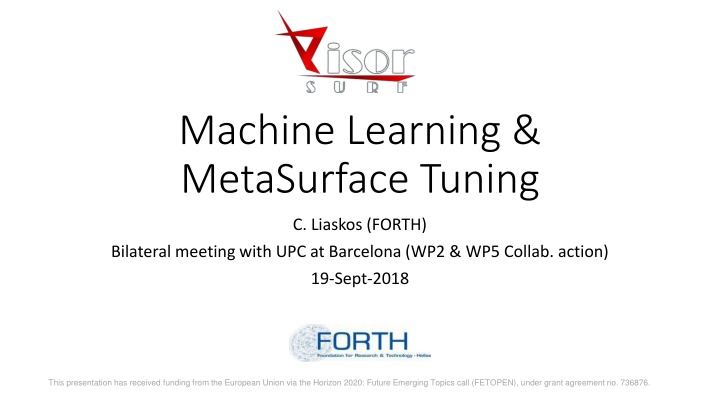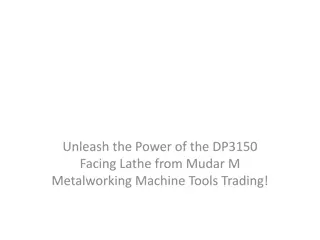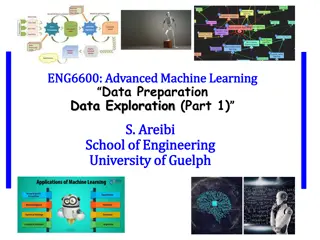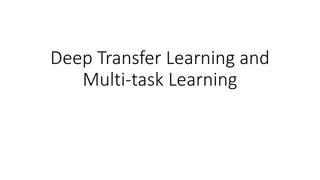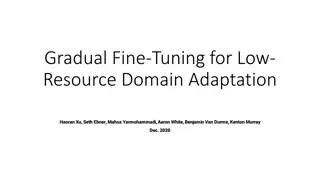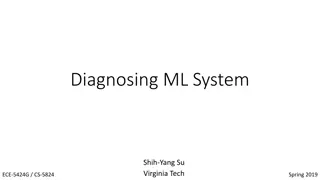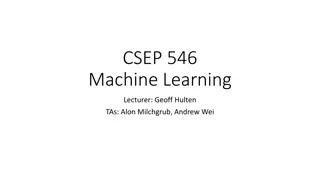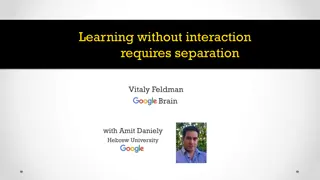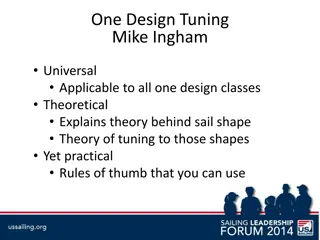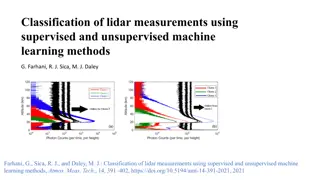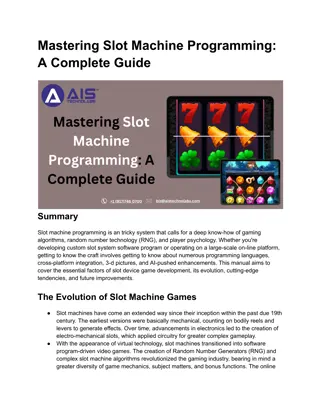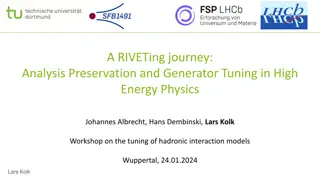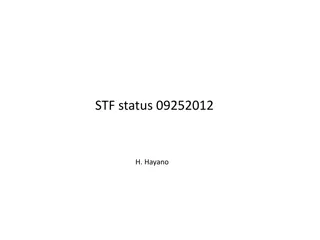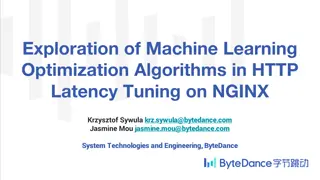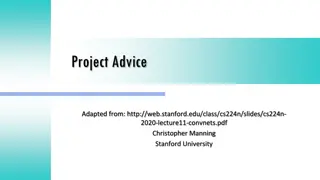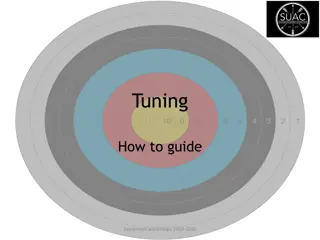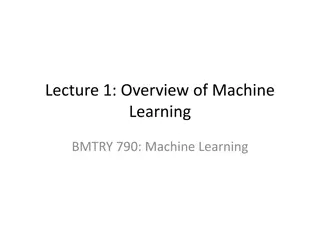Machine Learning & MetaSurface Tuning Case Studies
This presentation discusses passive and active MetaSurface tuning, presenting case studies, ML approaches, and simulation needs for optimal performance. It covers the use of machine learning in tuning meta-atoms and far-field radiation patterns, providing insights into voltage and current distributions. The steps outlined detail the practical implementation of the concepts discussed.
Download Presentation

Please find below an Image/Link to download the presentation.
The content on the website is provided AS IS for your information and personal use only. It may not be sold, licensed, or shared on other websites without obtaining consent from the author.If you encounter any issues during the download, it is possible that the publisher has removed the file from their server.
You are allowed to download the files provided on this website for personal or commercial use, subject to the condition that they are used lawfully. All files are the property of their respective owners.
The content on the website is provided AS IS for your information and personal use only. It may not be sold, licensed, or shared on other websites without obtaining consent from the author.
E N D
Presentation Transcript
Machine Learning & MetaSurface Tuning C. Liaskos (FORTH) Bilateral meeting with UPC at Barcelona (WP2 & WP5 Collab. action) 19-Sept-2018 This presentation has received funding from the European Union via the Horizon 2020: Future Emerging Topics call (FETOPEN), under grant agreement no. 736876.
Case 1: Passive MS INPUT wave attributes (planar wave): - DoA - Power - Polarization - Frequency OUTPUT 2: The far field radiation pattern ML approaches: - INPUT OUTPUT1 - INPUT OUTPUT2 No need for full MS simulation (periodicity) OUTPUT 1: Voltages & Currents between meta-atoms (Frequency domain)
Case 2: Active MS (lumped elements) INPUT A) wave attributes (planar wave): - DoA - Power - Polarization - Frequency OUTPUT 2: The far field radiation pattern B) Switch states - ABSORB functionality only - All switches to same state (even sub-optimal ones) ML approaches: - INPUT OUTPUT1 - INPUT OUTPUT2 No need for full MS simulation (periodicity) OUTPUT 1: Voltages & Currents between meta-atoms (Frequency domain)
Case 2a: Active MS (lumped elements) INPUT A) wave attributes (planar wave): - DoA - Power - Polarization - Frequency OUTPUT 2: The far field radiation pattern B) Switch states - ANY functionality - Switches set to any state ML approaches: - INPUT OUTPUT1 - INPUT OUTPUT2 Full MS simulations NEEDED OUTPUT 1: Voltages & Currents between meta-atoms (Frequency domain)
Steps We can begin with cases 1 & 2. CST & MATLAB control code in the SVN (by Alex) Runtimes should be very tractable: single meta-atoms, lumped elements only, no Julio chips. Case 2a will require distributed simulation runs
